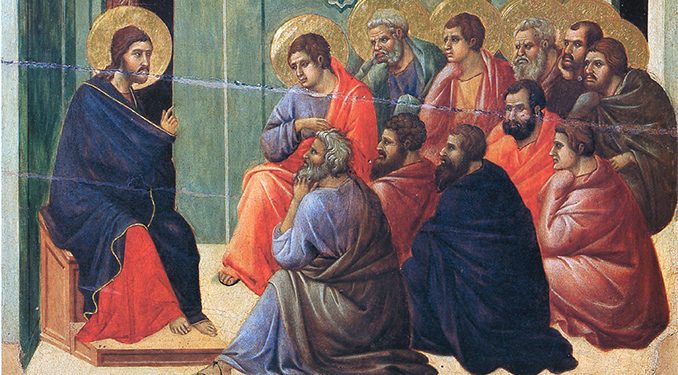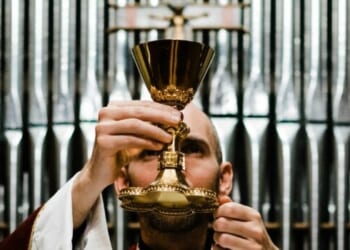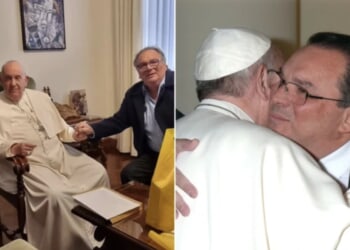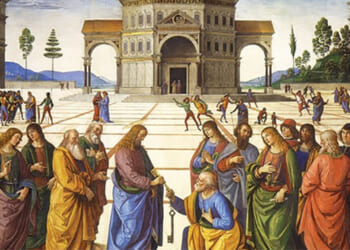
In recent interviews ahead of the conclave to elect a new pope, Jesuit Cardinal Michael Czerny gave an interview with The New York Times, in which he apparently attempted to polarize the word “unity”—a word that has allegedly become something of a rallying cry for critics of the recently concluded pontificate.
“If you ask me, ‘How would you name the wrong track for the conclave?’ I would say the idea that unity is the priority,” said Cardinal Czerny, who has led the Holy See’s Dicastery for Promoting Integral Human Development since 2019. “Unity cannot be a priority issue.”
What is happening here? Do some Catholic cardinals–those responsible for choosing the Church’s next pope in the conclave starting next week—truly believe that “unity” is not a priority for the Church?
We heard more from Cardinal Czerny the same day in an interview with CNN: “If you make [unity] your obsession, and if you try to promote unity as your primary objective, you end up with uniformity. This is exactly what we don’t need. We’ve spent decades now trying to learn to get beyond uniformity, to a true catholicity, a true pluralism.”
The issue at hand, then, is not that unity itself is bad, but that unity is being used as a code word for hopes to roll back the program of the Francis pontificate. To choose unity, therefore, means choosing a pope who would not necessarily be in continuity with the previous pontificate.
In this attempt to equate “unity” with “uniformity”—and uniformity, most Church observers and likely even the cardinals themselves would agree, is not what we should be about—seems to be making a “dirty word” out of one of the most critical needs of the Church. Unity (yes, taking into account the pluralism or diversity that makes up the richness of the Catholic faith) must not be sidelined as an unnecessary priority or sacrificed on an altar of semantics.
Lest we forget, unity was the priority for Jesus Christ the night before he died. “That they may all be one,” Christ prayed at the Last Supper, “as you, Father, are in me and I in you.”
Why? Christ answered: “That they also may be in us, that the world may believe that you sent me” (Jn 17:21).
Our Lord made clear, in what could be considered his dying wish, that our unity is what ensures our credibility and fuels our mission. So our unity with Christ is a gift he prayed will be given to us–the principle that keeps us united in faith and morals as Catholics.
How could we do anything but desire this unity and work to make it a living reality?
It is somewhat ironic that, especially since his April 21 death, Francis has been lionized as a symbol of unity. “Build bridges, not walls,” Cardinal Giovanni Battista Re said in his homily at the pope’s April 26 funeral, highlighting the point as a key mantra of Francis’ pontificate.
Is Cardinal Czerny, a Francis loyalist, saying Pope Francis himself, the pontifex maximus, the bridge builder, did not desire unity? Maybe he’s right.
One of the more divisive decisions of Francis’s pontificate was presented as a gesture in the name of unity–the 2021 implementation of what could reasonably be called draconian sanctions placed by Pope Francis on the celebration of Mass according to the 1962 Missal.
But liturgical pluralism is constitutive to the Church, nearly from the beginning, with the Catholic Church boasting dozens of rites, or forms, of liturgical worship. The Francis pontificate, though, worked against that particular pluralism, casting to the peripheries Catholics who worshiped according to the 1962 missal. Catholics were forced from their parish churches and told they could only attend Mass in church basements or parish halls.
And, unfortunately, these limitations came with little consultation or accompaniment, both supposedly key aspects of Francis’ hallmark project of synodality.
Such contradictions, which are wounds to unity, were not anomalies within the past dozen years of ecclesial life. In 2016, four cardinals made public that they submitted a formal “dubia” to Pope Francis, asking him to clarify various controversial points of doctrine in his apostolic exhortation “Amoris Laetitia.” Francis never replied.
Those cardinals’ attempt for greater unity became a missed opportunity to recognize the threat to unity that stemmed from this episode, to head off any divisions, and to engage in central themes of the pontificate, such as listening, dialogue, and accompaniment.
Finally, as the clergy sexual abuse crisis continued to raise its ugly head during Francis’s years in Rome, unity was further wounded due to an unequal and irregular exercise of transparency and justice. Consider alone the allegations against Father Marko Rupnik, the acclaimed modern artist who allegedly abused nearly an entire convent of nuns, was excommunicated and restored, was invited to preach to the Roman Curia, remained in “good standing,” and had his artwork featured on the papal bedroom wall.
Our response to the abuse crisis needs to be one of unity in truth and justice, especially for the most vulnerable.
In America, at least, divisions have been exacerbated in some of the pontificate’s episcopal appointments. A bishop has been removed from his post for—albeit irresponsibly and divisively handled–drawing attention to the pope’s lack of clarity on doctrine. Another bishop, elevated to the college of cardinals by Francis, was accused of heresy by a brother in the episcopate after promoting doctrinally unsound ideas in the public square. Then, as if a reward for promoting confusion, Francis later promoted him to a more influential see.
Catholics, including the cardinals upon whose shoulders the responsibility now temporarily falls exclusively for protecting the Catholic Faith, must find a balance between unity and diversity, mirroring the Trinitarian life we share. Unity, improperly achieved, can serve as an obstacle to living the fullness of divine life. Diversity, erroneously sought, can result in warring factions unable to transcend their divisions.
Yet unity is essential. One of the four marks of the Church, it is “of the essence of the Church” (CCC, 813). Weakened unity means a lot is at stake.
As the late Cardinal Francis E. George, O.M.I., put it: “If in that age of increasingly visible unity of the world as a whole, the Church is more and more internally divided, then we will have betrayed the Lord.”
The next pope must make working toward unity a key theme of his pontificate, for in his office, he “is the perpetual and visible source and foundation of the unity both of the bishops and of the whole company of the faithful” (CCC, 882).
Let’s hope and pray that this is remembered in the Sistine Chapel next week.
If you value the news and views Catholic World Report provides, please consider donating to support our efforts. Your contribution will help us continue to make CWR available to all readers worldwide for free, without a subscription. Thank you for your generosity!
Click here for more information on donating to CWR. Click here to sign up for our newsletter.









